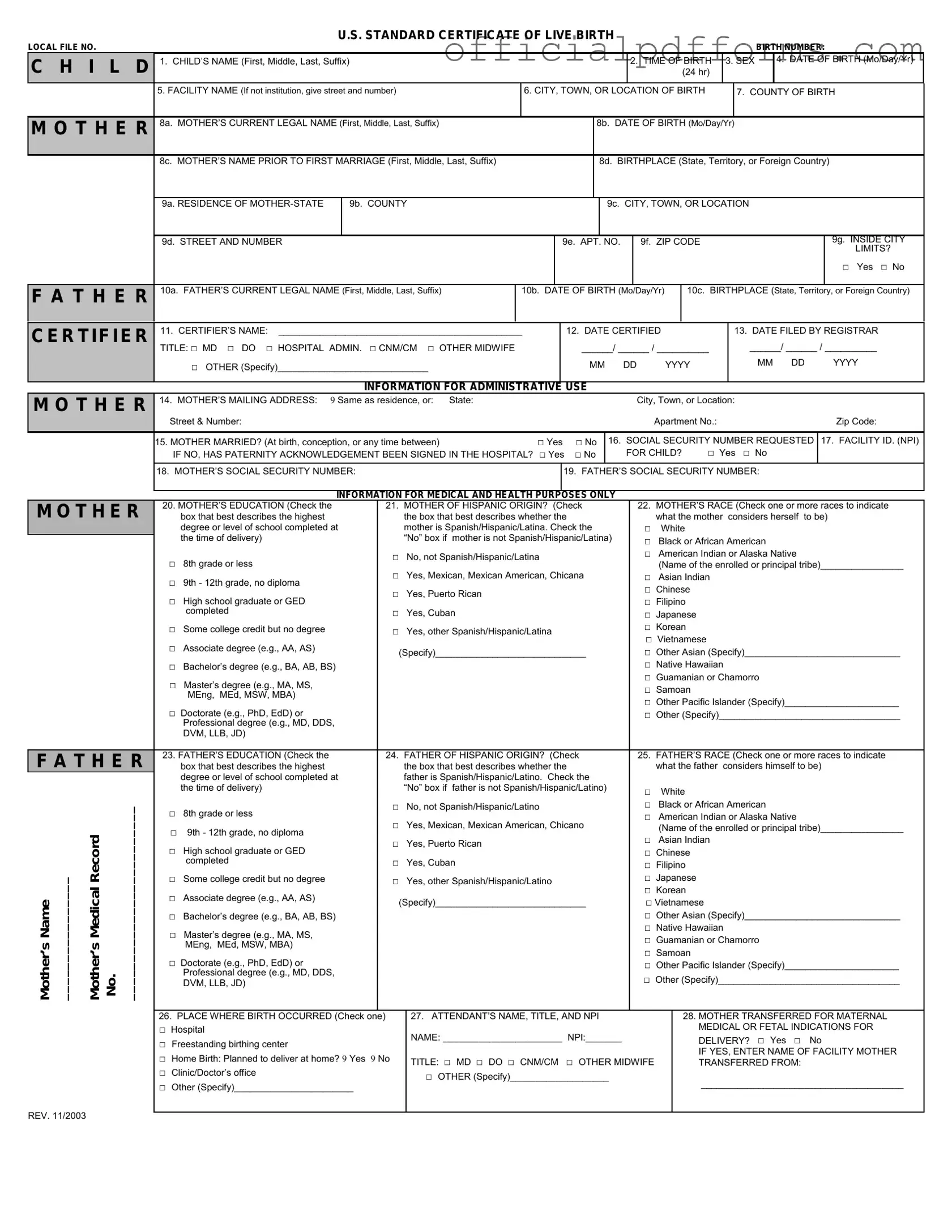The CDC U.S. Standard Certificate of Live Birth form is an official document used to record the details of a child's birth. This form is essential for establishing the identity of the newborn and serves as a vital record for various legal purposes, such as obtaining a Social Security number and enrolling in school.
Who is responsible for completing the birth certificate?
The responsibility for completing the birth certificate typically falls on the healthcare provider who attended the birth. This may include doctors, midwives, or hospital staff. However, parents are also encouraged to review the information for accuracy before it is submitted to the appropriate state agency.
The form requires various pieces of information, including:
-
The full name of the child
-
The date and time of birth
-
The place of birth, including the hospital or facility name
-
Parent(s) names, including their addresses and dates of birth
-
Information about the attending physician or midwife
How can I obtain a copy of the birth certificate?
To obtain a copy of the birth certificate, you typically need to contact the vital records office in the state where the birth occurred. You may be required to provide identification and pay a fee. Many states offer online services for requesting copies, while others may require you to submit a paper application by mail or in person.
Is there a time limit for filing the birth certificate?
Yes, there is usually a time limit for filing the birth certificate. Most states require the certificate to be filed within a certain number of days after the birth, often within 30 days. Failing to file within this timeframe may result in additional steps to obtain the birth certificate later.
What should I do if there is an error on the birth certificate?
If you notice an error on the birth certificate, it is important to address it as soon as possible. You can typically request a correction through the vital records office. The process may vary by state, but you will likely need to provide documentation supporting the correction, such as a hospital discharge summary or other official records.
Can I change the name on the birth certificate later?
Yes, it is possible to change the name on a birth certificate after it has been issued. This process usually involves filing a request with the vital records office and may require legal documentation, such as a court order or marriage certificate. Each state has its own regulations regarding name changes, so it is important to check the specific requirements for your state.
Why is the birth certificate important?
The birth certificate serves several important purposes. It is a legal document that establishes the identity of the individual and is often required for various activities, such as applying for a passport, enrolling in school, and accessing government services. Additionally, it provides a permanent record of the birth event for historical and genealogical research.
Are there any fees associated with obtaining a birth certificate?
Yes, there are usually fees associated with obtaining a birth certificate. These fees can vary by state and may differ depending on whether you are requesting a certified copy or a non-certified copy. It is advisable to check with your state's vital records office for the exact fee structure and accepted payment methods.
